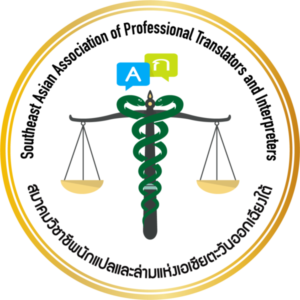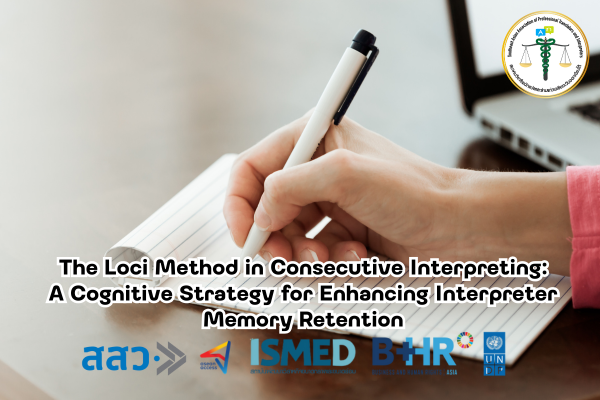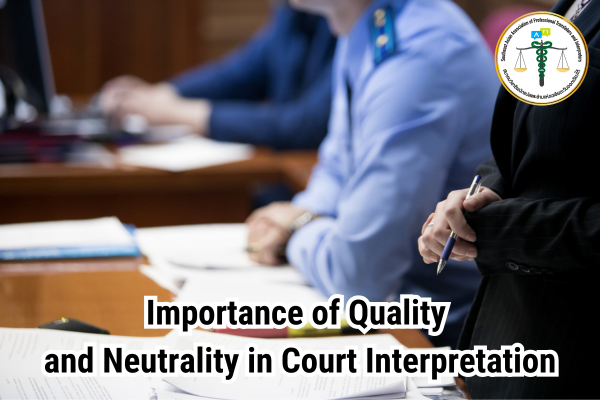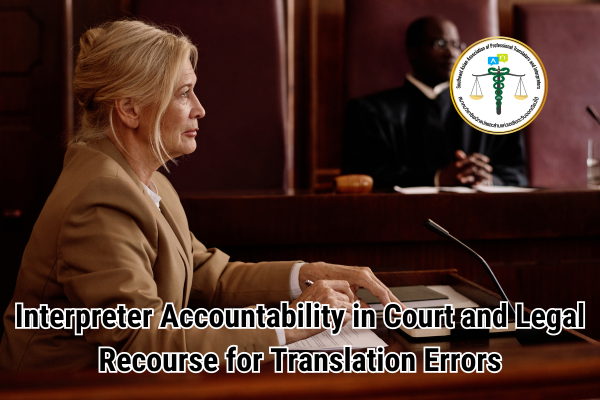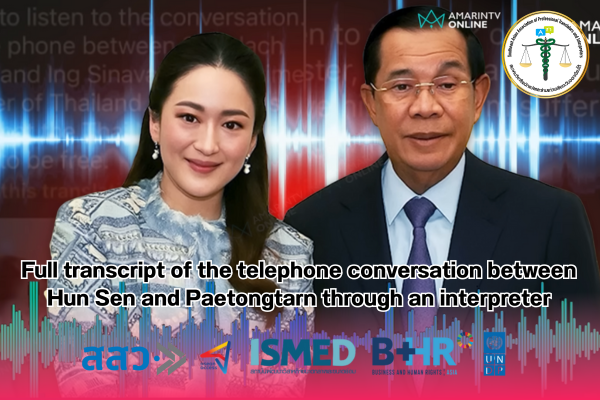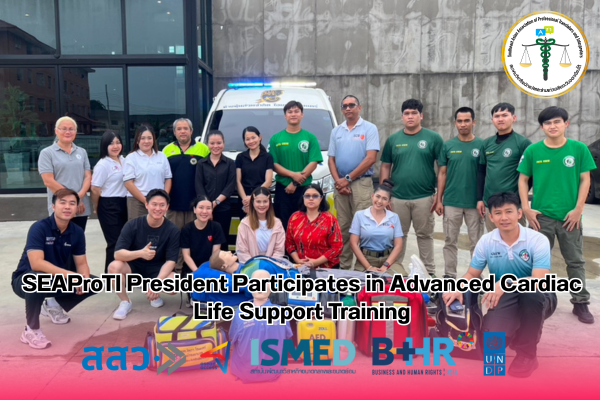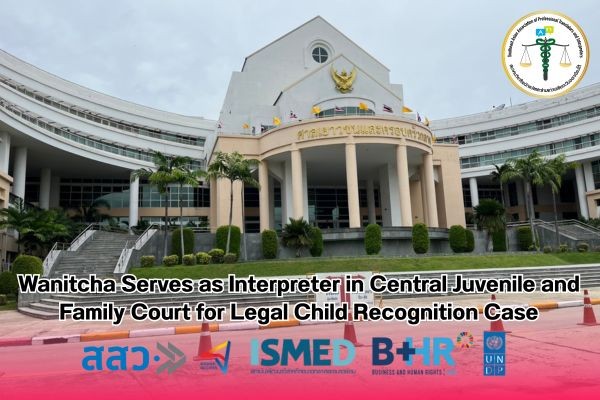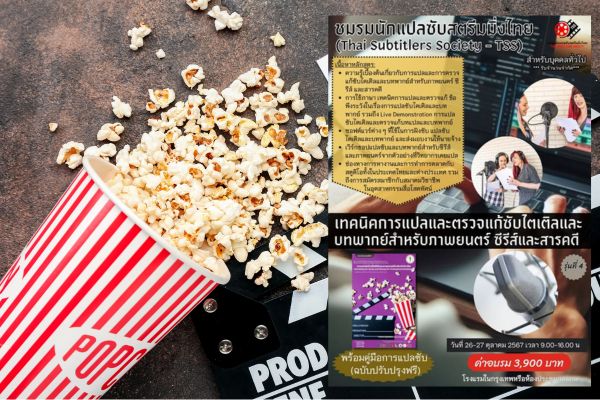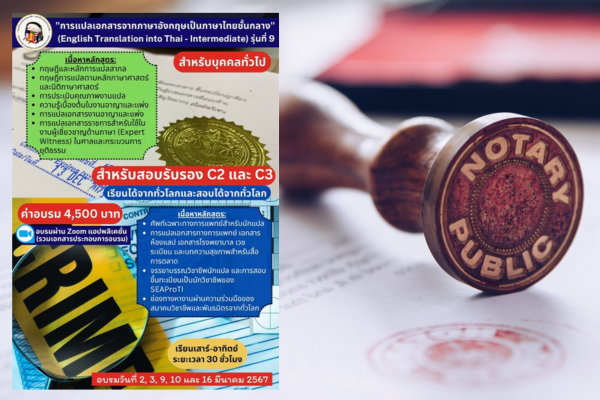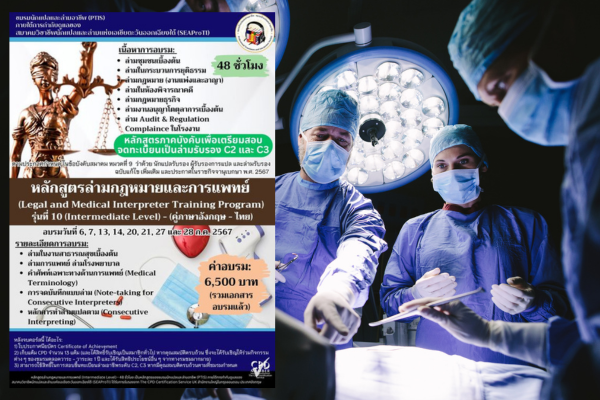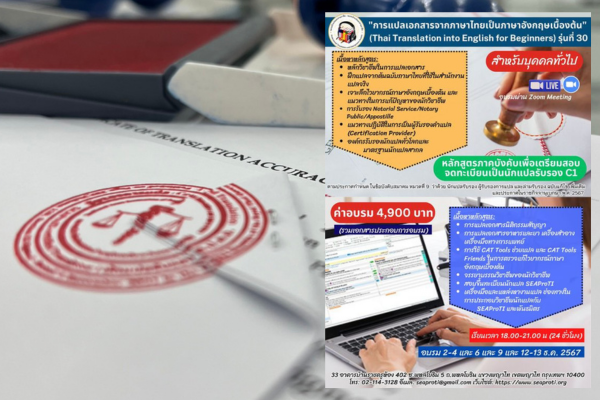The Loci Method in Consecutive Interpreting:
A Cognitive Strategy for Enhancing Interpreter Memory Retention
Consecutive interpreting requires a high level of memory retention, structural understanding, and accurate message delivery. Various interpreter training programs and research studies have identified the Method of Loci—also known as the Memory Palace technique—as an effective cognitive strategy for organizing ideas and recalling key content during interpretation. This article explores the application of the Loci Method in the context of consecutive interpreting, explaining its psychological mechanisms, practical usage, and benefits for interpreters seeking to enhance their memory, active listening, and logical sequencing skills.
Keywords:
Consecutive interpreting, interpreter memory, mnemonic techniques, Loci Method, Memory Palace, cognitive interpreting skills, interpreter training
1. Introduction
Consecutive interpreting is a form of interpretation in which the interpreter listens to a portion of a speech, processes it, and then delivers it in another language. This mode demands not only linguistic accuracy but also well-developed short-term memory, logical structuring, and message reconstruction skills.
While note-taking is a common aid for interpreters, there are many situations, especially with clearly structured speeches or when writing is not possible, where mnemonic techniques can provide significant support. Among them, the Loci Method stands out as a time-tested memory system that helps interpreters store and retrieve information efficiently.
2. What Is the Loci Method?
The Method of Loci is an ancient mnemonic technique that dates back to classical Greek and Roman orators. The term loci (Latin for “places”) refers to the mental use of familiar locations—such as one’s childhood home, neighborhood streets, or familiar buildings—as a framework for storing information.
This technique is based on the brain’s strong ability to remember spatial environments and visual details. The process involves:
- Choosing a familiar location (a house, school, office building, etc.)
- Identifying distinct points or “stations” within the location (rooms, hallways, furniture)
- Placing key ideas or information at each station
- Mentally “walking through” the location to recall the stored content when needed
3. Applying the Loci Method to Consecutive Interpreting
In consecutive interpreting, the Loci Method can be applied as follows:
- The introduction is mentally placed at the front door
- The first main idea sits in the living room
- Important statistics or figures rest on the kitchen table
- A sub-point might be placed near the staircase
- The conclusion waits on the back porch
When it’s time to interpret, the interpreter simply “walks” through this mental structure, retrieving the ideas stored at each spot and reconstructing the speech in the target language.
4. Benefits of the Loci Method for Interpreters
- Improved memory recall, especially for structured content
- Reduced reliance on linear note-taking, especially in fast-paced or high-pressure situations
- Enhanced active listening and visual thinking
- Better message organization and coherence
- Increased confidence when interpreting long segments without written support
- This method also strengthens overall cognitive agility and boosts the ability to retain abstract or technical content.
5. Training Recommendations
- Begin with a familiar place, such as your home or office
- Start with simple content (e.g., a short speech or paragraph)
- Place each main idea in a specific part of the mental space
- Practice delivering the content aloud using only the mental map
- Gradually increase the complexity and number of points as memory capacity improves
- Record and evaluate interpretation outputs for accuracy and flow
- This approach not only enhances memory but also improves speech delivery, coherence, and audience engagement.
6. Conclusion
The Loci Method is not merely a memory aid—it is a professional tool that helps consecutive interpreters manage complex content, maintain logical flow, and deliver messages with clarity and precision. For interpreters working in high-stakes environments or aiming to refine their consecutive technique, mastering this method offers cognitive and practical advantages. Regular training using Loci-based exercises can significantly elevate an interpreter’s performance and resilience in real-world settings.
This technique can also be adapted into interpreter training programs, CPD workshops, and memory enhancement modules. By customizing the mental “palace” to each interpreter’s experiences, trainers can create personalized and effective learning pathways.
SEAProTI’s certified translators, translation certification providers, and certified interpreters:
The Southeast Asian Association of Professional Translators and Interpreters (SEAProTI) has officially announced the criteria and qualifications for individuals to register as “Certified Translators,” “Translation Certification Providers,” and “Certified Interpreters” under the association’s regulations. These guidelines are detailed in Sections 9 and 10 of the Royal Thai Government Gazette, issued by the Secretariat of the Cabinet under the Office of the Prime Minister of the Kingdom of Thailand, dated July 25, 2024, Volume 141, Part 66 Ng, Page 100.
To read the full publication, visit: the Royal Thai Government Gazette
เทคนิค “ลอไซ” กับการล่ามแบบพูดตาม: กลยุทธ์ด้านความจำสำหรับล่ามมืออาชีพ
การล่ามแบบพูดตาม (Consecutive Interpreting) ต้องอาศัยทักษะด้านความจำที่แม่นยำและการถ่ายทอดสารอย่างมีโครงสร้าง งานวิจัยและแนวทางฝึกหลายฉบับชี้ให้เห็นว่าเทคนิคช่วยจำแบบ “Method of Loci” หรือ “Memory Palace” สามารถช่วยให้ล่ามจัดระบบความคิดและจำเนื้อหาได้ดีขึ้น บทความนี้นำเสนอการประยุกต์ใช้เทคนิค Loci ในบริบทของงานล่าม โดยอธิบายกลไกเชิงจิตวิทยา หลักการฝึกใช้งานจริง และข้อดีที่ล่ามสามารถนำไปใช้ในการพัฒนาทักษะการฟัง การจำ และการเรียบเรียงสารในสถานการณ์จริง
คำสำคัญ (Keywords):
การล่ามแบบพูดตาม, ความจำของล่าม, เทคนิคช่วยจำ, Loci Method, Memory Palace, การฝึกล่าม, cognitive interpreting skills
1. บทนำ
การล่ามแบบพูดตามเป็นรูปแบบหนึ่งของการล่ามที่ล่ามจะฟังผู้พูดจนจบช่วงหนึ่ง แล้วจึงถ่ายทอดเนื้อหาเป็นอีกภาษาหนึ่ง การล่ามประเภทนี้ต้องอาศัยทั้ง ความเข้าใจเนื้อหาเชิงลึก, การเรียบเรียงข้อมูล, และที่สำคัญคือ ความจำระยะสั้น (short-term memory) ที่มีประสิทธิภาพ
แม้ว่าล่ามหลายคนจะใช้เทคนิคการจดบันทึก (note-taking) เพื่อช่วยในการจำ แต่เมื่อเผชิญกับสถานการณ์ที่ไม่สามารถจดได้ทัน หรือเมื่อเนื้อหามีโครงสร้างชัดเจนและสามารถแบ่งช่วงได้ดี เทคนิคการจำแบบ Loci จึงกลายเป็นเครื่องมือสำคัญที่ช่วยให้ล่ามสามารถจัดระบบความคิดและเรียบเรียงสารได้อย่างแม่นยำ
2. ความหมายและกลไกของ “Method of Loci”
Method of Loci หรือที่รู้จักกันในชื่อ “Memory Palace” เป็นเทคนิคช่วยจำที่มีต้นกำเนิดจากยุคกรีกและโรมันโบราณ โดยเน้นการเชื่อมโยงข้อมูลกับ “สถานที่” ที่คุ้นเคยในจินตนาการ เช่น บ้านวัยเด็ก ถนนหน้ามหาวิทยาลัย หรือห้องต่าง ๆ ของสถานที่สมมุติ เทคนิคนี้อาศัยความสามารถของสมองในการจำภาพและสถานที่ มากกว่าการจำข้อความแบบลำดับธรรมดา
หลักการคือ
- เลือกสถานที่ที่จินตนาการได้ชัดเจน
- แบ่งสถานที่เป็นจุดต่าง ๆ เช่น ห้อง ประตู ชั้นวางของ
- วาง “เนื้อหา” ที่ต้องการจำลงในแต่ละจุด
- เมื่อถึงเวลาต้องนำเสนอหรือแปล กลับมา “เดินผ่าน” จุดต่าง ๆ ในหัวเพื่อเรียกคืนข้อมูล
3. การประยุกต์ใช้ในงานล่ามแบบพูดตาม
ตัวอย่างการใช้ Loci Method ในการล่ามแบบพูดตาม:
- บทนำของผู้พูด วางไว้ที่ประตูบ้าน
- ประเด็นหลักข้อแรก วางไว้ที่ห้องรับแขก
- ข้อมูลตัวเลขหรือสถิติ วางไว้บนโต๊ะอาหาร
- ประเด็นรอง วางไว้ที่บันได
- บทสรุป วางไว้ที่ระเบียงหลังบ้าน
เมื่อผู้พูดพูดจบ ล่ามสามารถ “เดินตามจินตนาการ” เพื่อดึงข้อมูลจากแต่ละตำแหน่ง แล้วถ่ายทอดออกมาเป็นภาษาที่สองได้อย่างลื่นไหล
4. ข้อดีของการใช้ Loci Method ในการล่าม
- เพิ่มความแม่นยำในการจำข้อมูล โดยเฉพาะข้อมูลเชิงโครงสร้าง
- ลดการพึ่งพาการจดบันทึกมากเกินไป เหมาะกับกรณีไม่มีโอกาสจด
- ส่งเสริมการฟังเชิงรุก (active listening) และการคิดเชิงภาพ (visual thinking)
- ฝึกการเรียบเรียงเนื้อหาอย่างมีระบบ ช่วยให้การล่ามเป็นธรรมชาติยิ่งขึ้น
- เพิ่มความมั่นใจให้กับล่ามในสถานการณ์กดดัน
5. แนวทางการฝึกใช้งาน
- เริ่มจากสถานที่ที่คุ้นเคย เช่น บ้านตัวเอง
- เลือกหัวข้อทั่วไปแล้วฝึกวางเนื้อหาตามตำแหน่ง
- ฝึกพูดตามจากข้อมูลที่จินตนาการไว้ใน “พระราชวังแห่งความทรงจำ”
- ค่อย ๆ เพิ่มความซับซ้อนของเนื้อหาและจำนวนจุดในแผนที่จินตนาการ
- บันทึกเสียงตนเองขณะล่ามเพื่อตรวจสอบความแม่นยำ
6. บทสรุป
เทคนิค Loci Method ไม่ใช่เพียงเครื่องมือช่วยจำ แต่เป็นแนวทางพัฒนาทักษะล่ามให้สามารถวางโครงสร้างความคิด จำสาระสำคัญ และถ่ายทอดเนื้อหาได้อย่างมืออาชีพ โดยเฉพาะในการล่ามแบบพูดตามที่ต้องใช้ทั้งสมาธิ ความจำ และการเรียบเรียงคำพูดอย่างแม่นยำ การฝึกใช้เทคนิคนี้อย่างสม่ำเสมอจะช่วยยกระดับความสามารถของล่ามให้พร้อมรับมือกับสถานการณ์จริงได้อย่างมีประสิทธิภาพ
เกี่ยวกับนักแปลรับรอง ผู้รับรองการแปล และล่ามรับรองของสมาคมวิชาชีพนักแปลและล่ามแห่งเอเชียตะวันออกเฉียงใต้
สมาคมวิชาชีพนักแปลและล่ามแห่งเอเชียตะวันออกเฉียงใต้ (SEAProTI) ได้ประกาศหลักเกณฑ์และคุณสมบัติผู้ที่ขึ้นทะเบียนเป็น “นักแปลรับรอง (Certified Translators) และผู้รับรองการแปล (Translation Certification Providers) และล่ามรับรอง (Certified Interpreters)” ของสมาคม หมวดที่ 9 และหมวดที่ 10 ในราชกิจจานุเบกษา ของสำนักเลขาธิการคณะรัฐมนตรี ในสำนักนายกรัฐมนตรี แห่งราชอาณาจักรไทย ลงวันที่ 25 ก.ค. 2567 เล่มที่ 141 ตอนที่ 66 ง หน้า 100 อ่านฉบับเต็มได้ที่: นักแปลรับรอง ผู้รับรองการแปล และล่ามรับรอง

